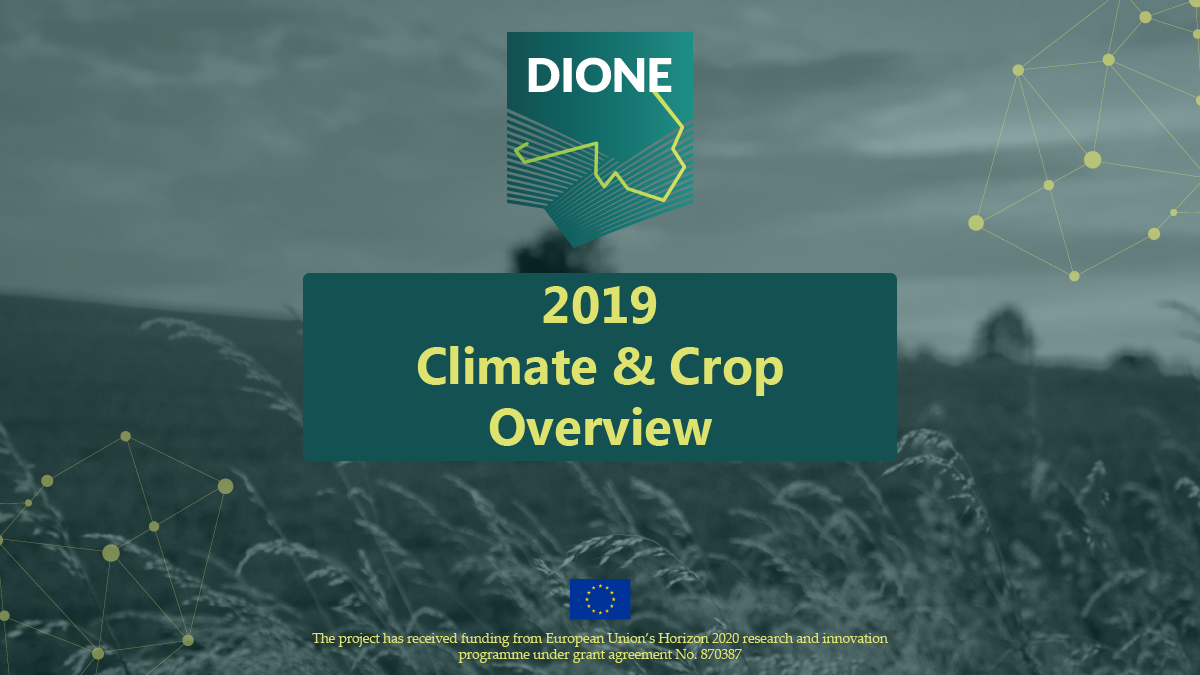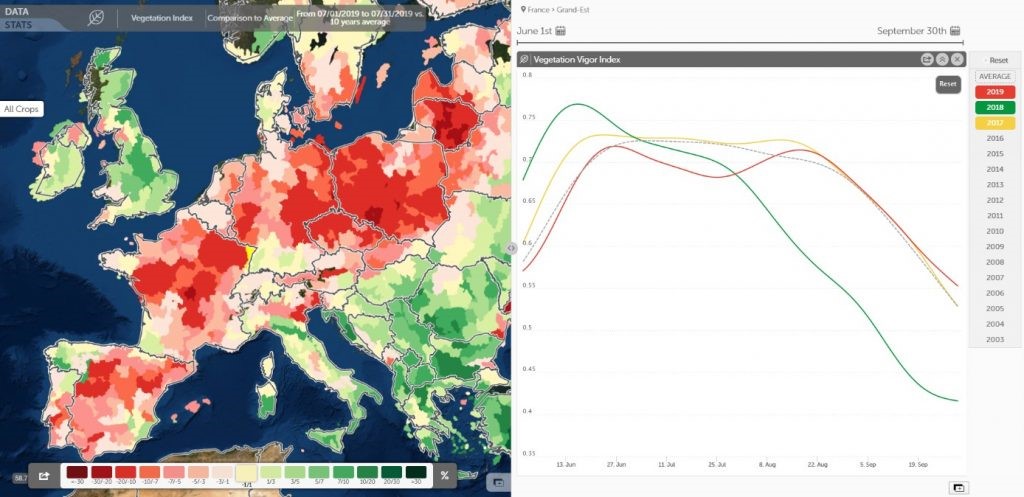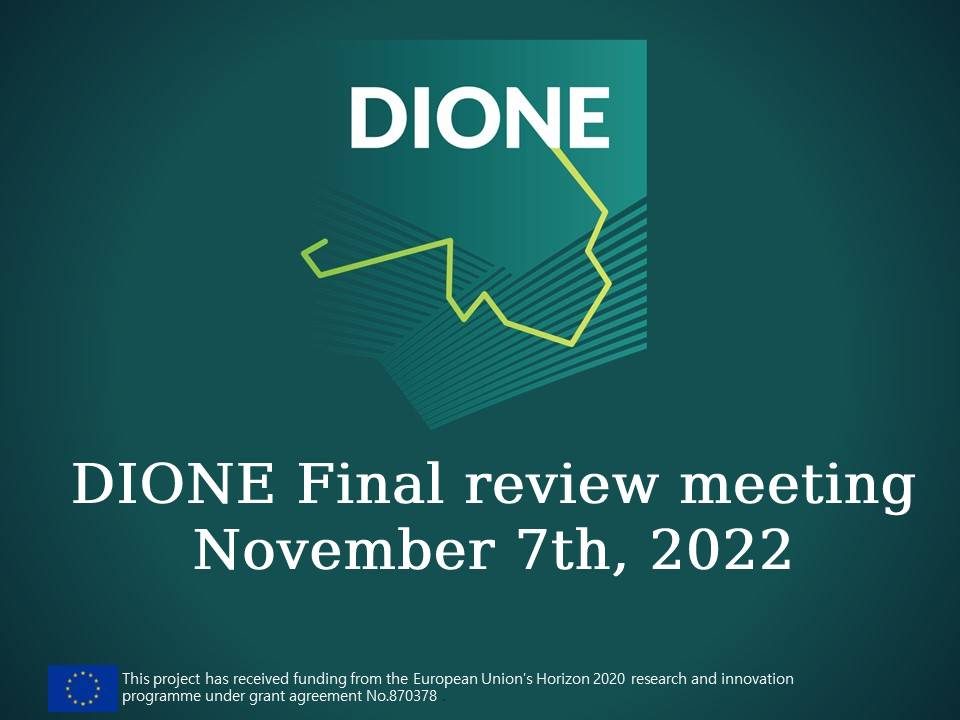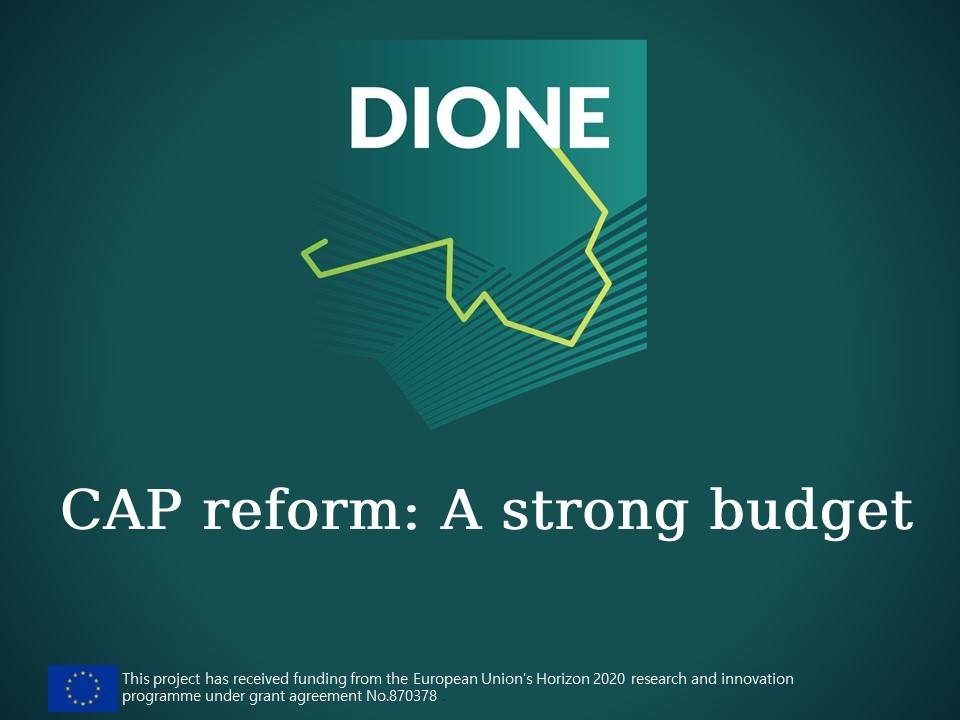
DIONE KICK-OFF MEETING
February 5, 2020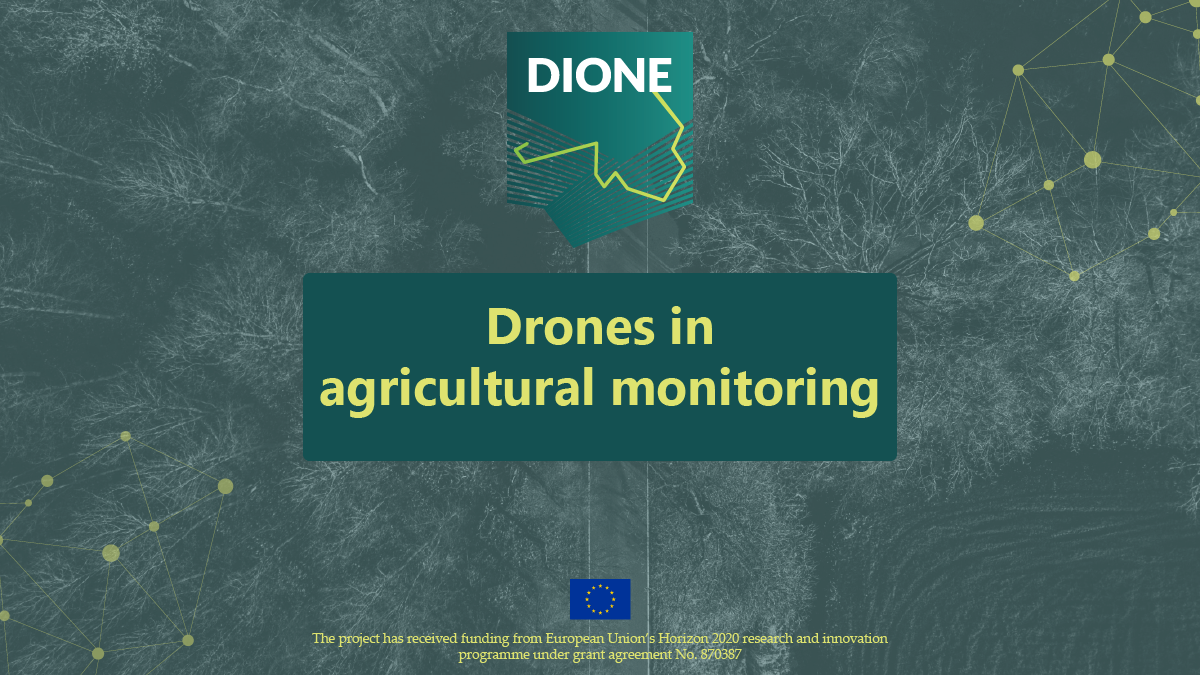
Drones in Agricultural Monitoring
April 21, 2020Since the 1980s, each decade has been warmer than the previous one as the average global temperature has risen by approximately 1.1°C (1.98°F) since the pre-industrial era. While 2016 remains the warmest year – due to the warming impact of a very strong El Niño event in addition to the climate change trend – 2019 was the second warmest year on record.
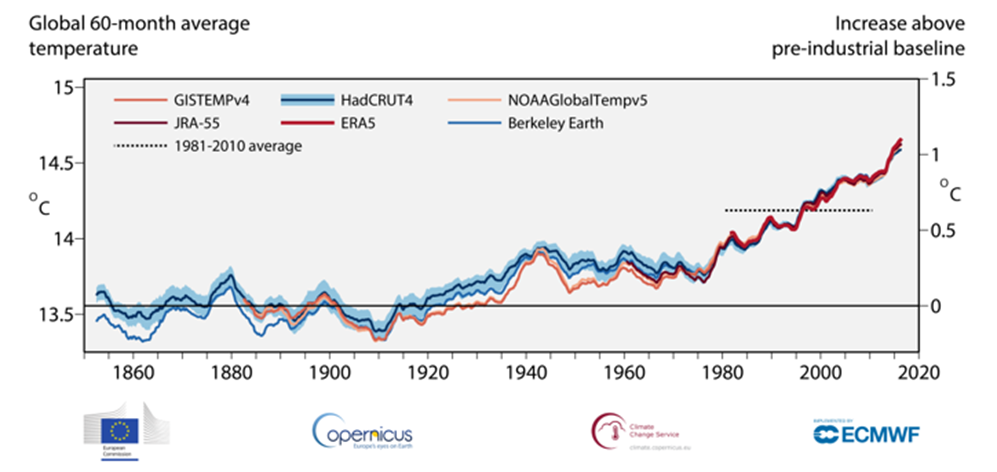
Unfortunately, this warming trend is expected to continue. We have record levels of heat-trapping greenhouse gases in the atmosphere and, according to the World Meteorological Organization (WMO) Secretary-General, “On the current path of carbon dioxide emissions, we are heading towards a temperature increase of 3 to 5 °C by the end of century.”

On a day-to-day basis, the impacts of climate change play out through extreme and “abnormal” weather. Heatwaves and floods that used to be a once-in-a-century occurrence are becoming more regular while tropical cyclones are more powerful and precipitation patterns are more erratic. All these climate change impacts increase weather vulnerability – posing an even greater threat to crop yields.
Europe – Heat, Flooding and Droughts
With above-normal precipitation totals recorded in multiple regions, flooding became substantial during the fall. The first major flooding event in mid-September was caused by a cut-off area of low pressure that was located over the Iberian Peninsula. The most significant event in Italy occurred in mid-November because of several low-pressure systems that originated in the western Mediterranean. In Southern France, two notable “Mediterranean episodes”, a phenomenon that brings intense storm systems mostly during the autumn months, occurred November 22-23 and December 1-2, leading to significant floods. This was a sharp contract to the dry conditions experienced July – September. Specifically, France had a total of 34 consecutive days (August 19–September 21) without rain, its second longest dry spell on record. However, the drought situation was milder than it was in 2018, due to increased precipitation at the end of year.
The 2018/2019 season in Europe started with the sowing of rapeseed during the summer of 2018. July through September 2018 were characterized by a dry trend in the top 3 rapeseed producing countries in Europe. These conditions strongly penalized the sowing and emergence of crops. Largely for this, the areas harvested in Europe in 2019 were 17% lower than the 15-year trend – but unattractive prices also played a role in this situation. Crops that suffered greatly at the start of its cycle never fully recovered during the season. Finally, the dry trend in April during flowering contributed to the weakening of the production potential. Yields were disappointing in Germany (-5% compared to the yield trend), France (-6%) and Poland (-5%). Across the European Union, the average yield was 4% below the yield trend, and 8% below the 5-year average.
Spring conditions were favorable for the development of winter barley – particularly in the two leading producing countries of France and Germany. Total barley yields in these countries were more than 10% above trend, while we saw disappointing performance in Spain due to hot and dry spells during yield development.
For wheat, the mild winter limited the problems of winter frost and was favorable for the good resumption of crop growth in February-March. Spring precipitation was generous in the South-East of Europe, and rather close to normal in the West. In France, yields were 7% higher than the yield trend for winter wheat. The equally positive results of wheat in Romania and the United Kingdom enabled European production of soft wheat to hit 2% above the trend. Durum production on the continent ended 6% below the 15 years trend, penalized by the drought in the south, leading to the poor performances of durum wheat in Spain (-22% compared to the trend), Greece (-9%) and Italy (-3%). While France’s durum wheat yields were 5% above the yield trend, it was not enough to reverse the negative trend across Europe.
The map shows vegetation index compared to the 10-year average for July, the chart shows the NDVI curves in yellow highlighted region of France for June-September.
The corn season was marked by a strong difference between the west and the east. Satisfactory soil moisture around the Balkans allowed good yields in Hungary (+ 9% compared to the 15-year trend), Romania (+ 13%) and Serbia (+ 12%). However, the dry and summer heat in the center and west of the continent strongly penalized the pollination of corn, as seen in the significant drop in NDVI during this period. Yields were therefore very disappointing in France (-5% compared to the trend), Germany (-12%) and Poland (-13%). The very wet end to the season, which made harvesting particularly difficult in France, was another factor in the deterioration of the situation. European production finished close to 65MT, 5% below the 15-year yield trend. European yields were almost 3% below trend.
For more insights on the impacts of Climate Change on global crops, view the complete 2019 Climate & Crop Report.
Source: https://www.urthecast.com/5-most-impacted-regions-2019-climate-crop-overview/



